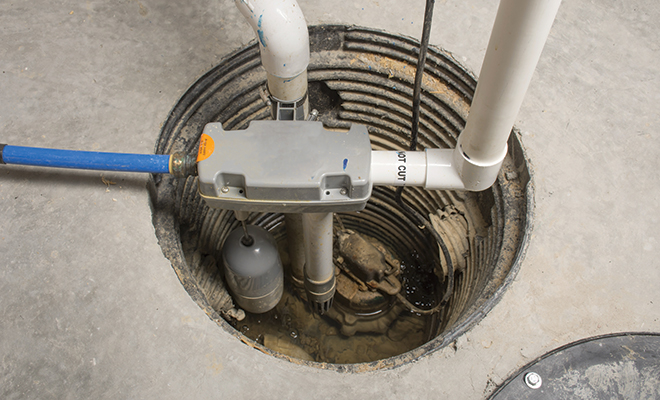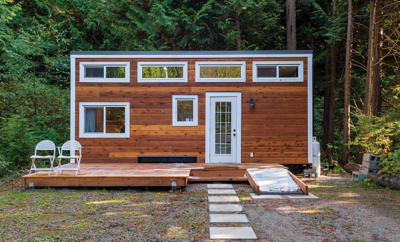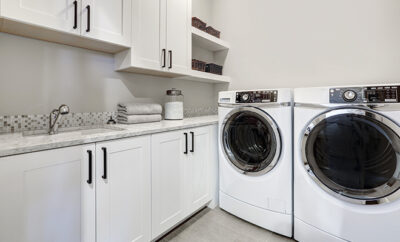
Waterproofing Your Home
Owning a house is a dream come true for many people, but the dream can quickly become a nightmare when costly maintenance issues arise. One of the very worst is water damage. Waterproofing is usually required by building codes, but if water is seeping due to faulty work, it can cause long-term problems.
Warning signs that water is seeping into the foundation or basement include cracked walls, either horizontally, vertically, diagonally or stair-stepped, and buckling walls. Other indications are peeling paint; efflorescence, a white powdery residue found on walls near the floor; and mold or fungi growing in damp and dark areas.
When seeking solutions, most people think of basement waterproofing, which is where most problems arise. But the roof and siding are important too.
In many areas of the country, humidity plays a part, but not so much for a house in Arizona where the humidity is very low. Humidity can cause mold, mildew, pest infestations, wood rot and, perhaps worst of all, permanent damage to the home’s structure.
Several measures exist to prevent water from penetrating a basement or to divert water that has penetrated a foundation. There are interior wall and floor sealers, interior and exterior water drainage tools, exterior waterproofing coatings and foundation crack injections. Let’s take a look at a few ideas.
Basements
A house is built upon its foundation, so the strength and life of the house depend on it. It makes sense that the foundation and the basement need special attention. If left unattended, significant damage can occur. A homeowner with a basement has two choices; let the water in and pump it out, or keep it out altogether. The difference between the two is either waterproofing or water control.
A basement can develop water problems over time from the outside soil condition, so waterproofing it prevents water and moisture from entering the basement. Mold and mildew stay away and the home stays protected.
Sometimes it’s necessary to have an interior water management system such as an automatic sump pump to remove water or high moisture levels. Water is directed to the sump pump for easy removal, controlling the flow of water. The water is actually allowed in so that it can be pumped back out.
Crawl Spaces
For homes with only a crawl space underneath, there are floor supports that assist the floor joists with the weight and settling of a house to keep the floors from sagging. These floor joists can become damaged by moisture and could need replacement or repair; otherwise, significant structural damage could occur.
A crawl space encapsulation seals the entire space, and often a dehumidifier is installed, taking moisture, mildew and moldy smells from the area and turning it into a clean and dry space. The air in a home comes mostly from the crawl space, so it’s important to keep out musty wet smells and moisture.
An alternative to encapsulation is a moisture barrier, a polyethylene material that is placed on the ground to block moisture. With proper ventilation through foundation vents, it becomes effective by allowing air to pass through the crawl space to keep it dry. However, if the soil has a consistently high moisture content, encapsulation may be a better alternative.
Exterior Spaces
One effective solution to prevent water from entering a home is the use of French drains or gutters. Both divert water from the house to keep it out of the crawl space or basement altogether. Done together, these two methods can be effective because water will not be allowed to rest against the house to cause significant damage to the foundation.
This is known as hydrostatic pressure. Simply put, hydrostatic pressure is the force that occurs when the water is still and is forced forward or outward to the path of least resistance. If water is standing or resting against a house, eventually it will go into the crawl space or basement. This causes bowing basement walls, cracked basement walls, shifting foundations, increased settling and many other problems.
Often, homeowners are not concerned with gutters, but this is a mistake. When gutters are installed incorrectly, they may be draining water right up against the foundation and can cause problems with the surrounding soil. They need to be installed so that the water runs away from the foundation into a drain system or another area. If necessary, extensions can be added to downspouts to further divert water.
Water is one of the scariest homeowner fixes. What’s the bottom line? A homeowner can try to fix the problem with interior applications such as concrete waterproofing coatings, silicate-based concrete sealers, waterproofing paint or plastic sheets and panels.
But most industry experts agree that the best bet is exterior waterproofing, a full-scale waterproofing solution that is perhaps more expensive but worth the investment. ■
Sources: thisoldhouse.com, diynetwork.com and bobvila.com.







